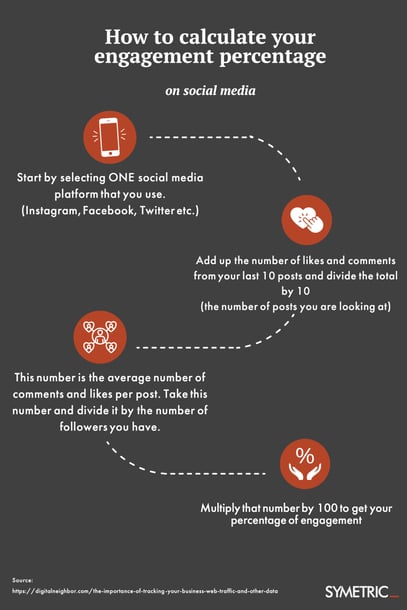Why Tracking is Important For Your Business
We’ve all heard the saying that ‘knowledge is power’, and when it comes to running a business, this is especially true. But before you can gather enough knowledge to become powerful, you first have to have an understanding of your customers, audience, and the impact your business has. How do you do this? The answer is by tracking…everything! The data that is collected from tracking can be extremely helpful in determining what business efforts are or are not working, allowing you to focus time and energy on tactics that will produce results.
But, what should you be tracking?
We weren’t kidding when we said track everything. You should be tracking anything and everything that you can; customers, visitors, website traffic, email or form inquiries, and social media activity.
By tracking all of this (and more) you can collect valuable information about your business. For example, tracking allows you to:
- Understand your engagement level
- Tracking things like your social media statistics, email activity, and website traffic give you an understanding of your engagement level. Is your audience interacting with your content? Or are they visiting your website but not engaging with it? Monitoring engagement provides a glimpse into your audiences behaviour and reveals trends and patterns between content style and level of engagement. This presents an opportunity for you to tailor your marketing initiatives or website content to maximize audience engagement.
- Not sure how to track your social media engagement? Try this activity to get your engagement percentage:

Although it changes depending on the platform you use, here is a general rule of thumb for engagement percentages. On Instagram, 2% is seen as good and anything more than 3% is considered great. Typically, an engagement percentage between 1% and 5% is considered to be good. (ContentCal)
However, it should be noted that there are many different ways to track. Tracking engagement is just one example of how to determine the success of your social media strategy. What you choose to track will look different for every business because it depends on the goals of your social media strategy. For example, maybe an increase in followers and engagement rate is not your primary goal, instead, maybe you are hoping your social media presence will increase SEO. If that is the case, you likely will not spend much time tracking your followers or interactions, but rather, will track things like organic traffic, keyword ranking, or SERP visibility to measure the improvement in SEO.
- Enhance customer experience
- Data helps businesses understand their customers better. Knowing specific information like the paths visitors take on your website, or what emails they take the time to read, or what stage in the customer cycle they are in, can help you enhance their experience interacting with your company. Tracking identifies what your customers’ likes and dislikes are, giving you the ability to adjust your strategy to provide a better overall customer experience.
- Know what tactics are working and what is not
- Tracking can help with money management and improve business decisions overall. After analyzing the tracking data, you will be able to gather insights on how your marketing efforts, campaigns, or website design is working (or not working). This gives you an opportunity to stop or adjust a strategy that is not performing well, giving you more time, energy, and money to put towards activities that are going to bring you closer to your goals.
How does tracking relate to your goals and buyer personas?
As you now know, tracking produces important data that can be used to understand your customers and make informed business decisions. However, you can also use tracking to help reach your goals and define your buyer personas.
If you think back to our last blog (if you missed it, check it out here), building out a buyer persona can be a lot of work, but having solid data to draw conclusions from is key. Tracking specific actions and behaviours from your ideal customers and analyzing the information will tell you a lot of what you’ll need to know to develop a buyer persona. Once you’ve identified your buyer persona and have a good understanding of how your customers engage with your content, website, and brand, you will be able to use this data for future marketing and sales campaigns.
When it comes to goal setting, using SMART goals, you’ll know that a good goal should always be measurable. Tracking and measuring your business activity gives you a great idea of how your company is performing and if you are on track to achieve your goal. Having concrete numbers to support and guide your efforts is going to help bring you to your goal. The data that you collect from tracking can also be useful in setting goals in the future. For example, if you know that your engagement is low because of the data you have collected from tracking, you may choose to make a goal to focus on your engagement levels in the future.
Now that you are an expert on all things tracking, it's time to begin! Tracking can give you answers to the questions you need to know, giving you a clearer understanding of your customers/audience, and your business efforts. If you are overwhelmed and don't even know how to start tracking or gathering this information, send us a message, we'd love to help you.
